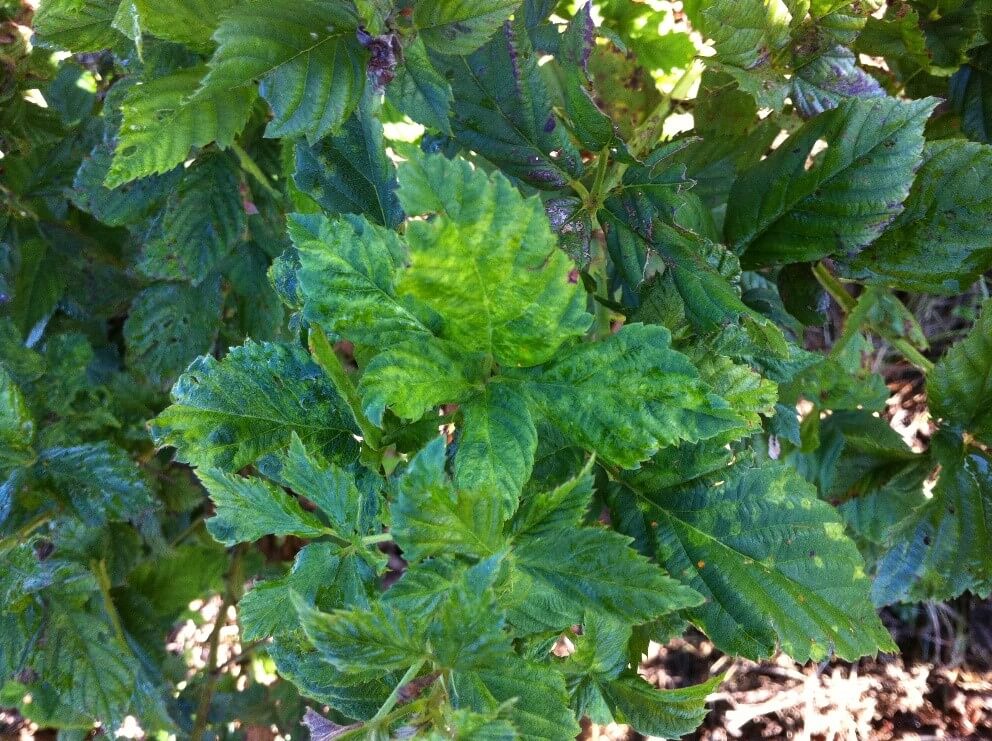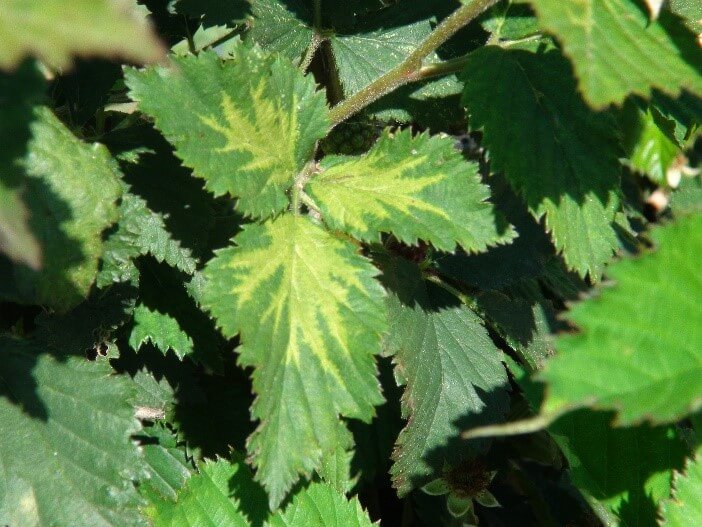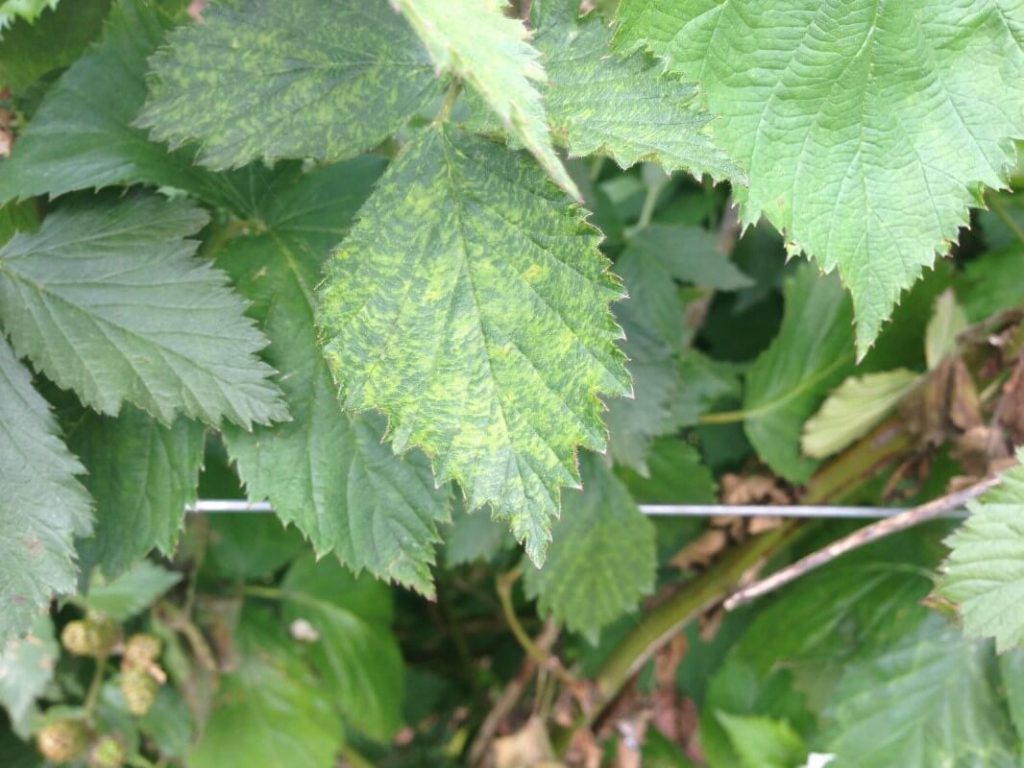By Ioannis E. Tzanetakis, Professor and Director of the Arkansas Clean Plant Center – University of Arkansas Division of Agriculture
Plants are not immune to viruses. Unlike many other pests and pathogens, once a plant is infected with a virus, it is infected for life. Blackberry is no exception. The most important virus disease in blackberries in the Southern U.S., capable of causing significant yield losses, is blackberry yellow vein disease (BYVD). This disease was first observed around 2000.
What is unique about BYVD?
BYVD is not caused by a single virus but rather by a virus complex that may include blackberry yellow vein associated virus (BYVaV), blackberry chlorotic ringspot virus (BCRV), blackberry virus E, blackberry virus Y, blackberry leaf mottle associated virus (BLMaV), blackberry vein banding associated virus, impatiens necrotic spot virus (INSV), and tobacco ringspot virus (TRSV), among others. BYVaV, BLMaV, and BCRV are the most prevalent viruses in the complex. Symptoms include vein yellowing, mottling, oak-leaf or line patterns, and ringspots (Figure 1). These symptoms initially occur on a small area of affected leaves early in the season and then progressively spread to occur on the majority of the affected leaves. Similarly, symptoms initially develop on only a few leaves but spread to other parts of the plant as the season progresses. As more viruses accumulate in plants, symptoms become progressively stronger and plants become less productive (reduced yields) to the point they need to be replaced. Properly maintained blackberries can typically be productive for 20 years or more. However, once BYVD becomes established in an area and blackberry plants become infected, plants can become unproductive in as few as five years.
Because of the many BYVD-associated viruses that are endemic in the Southern U.S., it is very difficult to mitigate the transmission of all viruses. BYVD-associated viruses can be transmitted by pollen, nematodes, whiteflies, thrips, mealybugs, eriophyid mites, and, potentially, beetles and aphids.
How do we combat such a complex disease?
Several management practices can be implemented to either prevent the introduction of viruses associated with BYVD into new fields or reduce the spread of these viruses. These include:
Scout for BYVD in commercial fields and surrounding areas. Regularly scout fields and surrounding areas for symptoms of BYVD. In some cases, decades-old plants may be infected by a single virus and remain asymptomatic; in others, plants in the second year of production may display typical symptoms of BYVD and be infected with several viruses. Identify and talk to your local University Extension specialist to get an idea of BYVD prevalence in your area. These specialists often regularly visit commercial operations and may be able to provide more information about disease and virus prevalence and/or status in your area. Wild blackberries can also serve as reservoirs for many of the viruses in the BYVD virus complex. Symptoms on these plants indicate that BYVD may be endemic to the area.
Use clean plants. Plant material should be tested and found to be free from all viruses in the BYVD complex before planting in the fields. Clean plants can, of course, become infected after they are established in the field; however, it will take time before enough viruses accumulate within plants to cause yield losses comparable to plants that are established with known infections.
Eliminate weeds in and around blackberry plantings. Many of the viruses in the BYVD complex also infect broadleaf weeds. Removing these weeds in and around plantings can help reduce potential virus reservoirs and can slow virus spread.
Get soil tested for nematodes. TRSV, a virus transmitted by the dagger nematode, is often found in BYVD-affected plant material. Collecting multiple soil cores from plantings and submitting a soil sample for nematode testing can provide insight on whether TRSV poses a threat.
Scout fields for insect vectors. While scouting fields for BYVD, it is also important to scout for potential insect virus vectors, such as whiteflies, and then implement practices to control those vectors, if present. If only a dominant vector is present, successfully controlling this vector could significantly slow virus spread.
More information on viruses and virus diseases of Rubus species, which includes blackberries and raspberries, is available in the publication “Viruses and Virus Diseases of Rubus”, available at https://apsjournals.apsnet.org/doi/10.1094/PDIS-04-12-0362-FE.
Figure 1. Symptoms of blackberry yellow vein disease include:
Photo credits: I.E. Tzanetakis, University of Arkansas.


